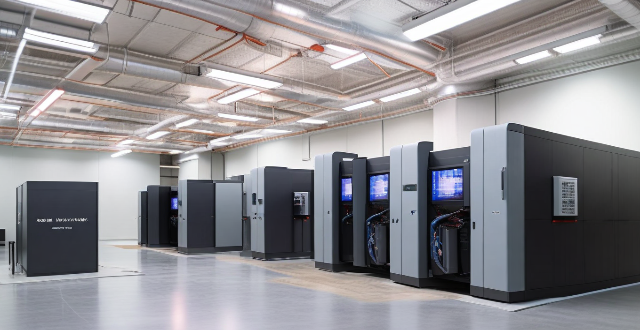Installing Huawei 5G base stations can bring cost-effectiveness, performance improvements, and future-proofing benefits to telecommunications carriers. The simplified network architecture and energy-saving technologies reduce deployment and operational costs. High-efficiency power amplifiers, intelligent sleep mode, and eco-friendly design contribute to energy efficiency. Enhanced coverage and capacity are achieved through massive MIMO technology, beamforming, and carrier aggregation. Latency reduction is possible with edge computing, network slicing, and optimized routing. Scalability is ensured by software-defined networking, modular design, and compatibility with future standards. Longevity comes from durable hardware, robust software support, and ease of maintenance. Overall, installing Huawei 5G base stations positions carriers for success in the digital transformation era.

Potential Benefits of Installing Huawei 5G Base Stations
Introduction
In the era of digital transformation, telecommunications carriers are constantly seeking ways to enhance their network infrastructure. One such solution is the installation of 5G base stations from leading manufacturers like Huawei. This article explores the potential benefits that carriers can realize by choosing to install Huawei 5G base stations in their networks.
Cost-Effectiveness
Simplified Network Architecture
Huawei's 5G base stations offer a simplified network architecture, reducing the overall cost of deployment and maintenance. The streamlined design minimizes the number of components required, resulting in lower upfront costs and reduced operational expenses over time.
Energy Efficiency
Energy consumption is a significant concern for carriers, and Huawei's 5G base stations address this issue with advanced energy-saving technologies. These include:
- High-Efficiency Power Amplifiers (PAs): Huawei's PAs are designed to operate at maximum efficiency, reducing power consumption without sacrificing performance.
- Intelligent Sleep Mode: When not in use, certain components of the base station can enter a low-power sleep mode, further reducing energy consumption.
- Environmentally Friendly Design: Huawei's base stations are designed with eco-friendly materials and processes, minimizing their environmental impact and contributing to sustainable development goals.
Performance Improvements
Enhanced Coverage and Capacity
Huawei's 5G base stations provide improved coverage and capacity, enabling carriers to serve more customers with higher data rates. Key features include:
- Massive MIMO Technology: Huawei's massive multiple-input, multiple-output (MIMO) technology allows base stations to communicate with multiple users simultaneously, increasing spectral efficiency and throughput.
- Beamforming: Beamforming technology focuses signal transmission on specific user devices, improving signal strength and reducing interference for better coverage and quality of service.
- Carrier Aggregation: By combining multiple frequency bands, carrier aggregation enables higher data rates and greater network capacity, meeting the demands of bandwidth-intensive applications.
Latency Reduction
Lowering latency is crucial for real-time applications such as online gaming, autonomous vehicles, and industrial automation. Huawei's 5G base stations contribute to latency reduction through:
- Edge Computing: By processing data closer to the end user, edge computing reduces the distance that data must travel, resulting in faster response times and lower latency.
- Network Slicing: Network slicing allows carriers to allocate dedicated resources within their networks for specific services or applications, ensuring consistent performance and minimal latency for those tasks.
- Optimized Routing: Advanced routing algorithms optimize data paths within the network, minimizing congestion and delays to provide a smoother user experience.
Future-Proofing Investments
Scalability
As demand for mobile data continues to grow, carriers must ensure that their investments today will support future needs. Huawei's 5G base stations offer scalability through:
- Software-Defined Networking (SDN): SDN enables carriers to adapt their networks flexibly to changing requirements, making it easy to add capacity or modify services as needed.
- Modular Design: The modular design of Huawei's base stations allows for easy expansion or upgrades, ensuring that the infrastructure can evolve alongside technological advancements.
- Compatibility with Future Standards: Huawei's commitment to open standards ensures that its base stations will be compatible with future developments in 5G and beyond.
Longevity
Investing in Huawei's 5G base stations provides longevity due to:
- Durable Hardware: Built using high-quality materials, Huawei's hardware is designed to withstand harsh environments and maintain performance over extended periods.
- Robust Software Support: Ongoing software updates and security patches ensure that the base stations remain secure and up-to-date with the latest features and improvements.
- Ease of Maintenance: With user-friendly interfaces and diagnostic tools, maintenance and troubleshooting are streamlined, extending the effective lifespan of the equipment.
Conclusion
By installing Huawei 5G base stations in their networks, carriers can enjoy numerous benefits including cost savings, enhanced performance, and future-proofing their investments. As the global transition to 5G accelerates, partnering with a trusted supplier like Huawei positions carriers for success in an increasingly connected world.